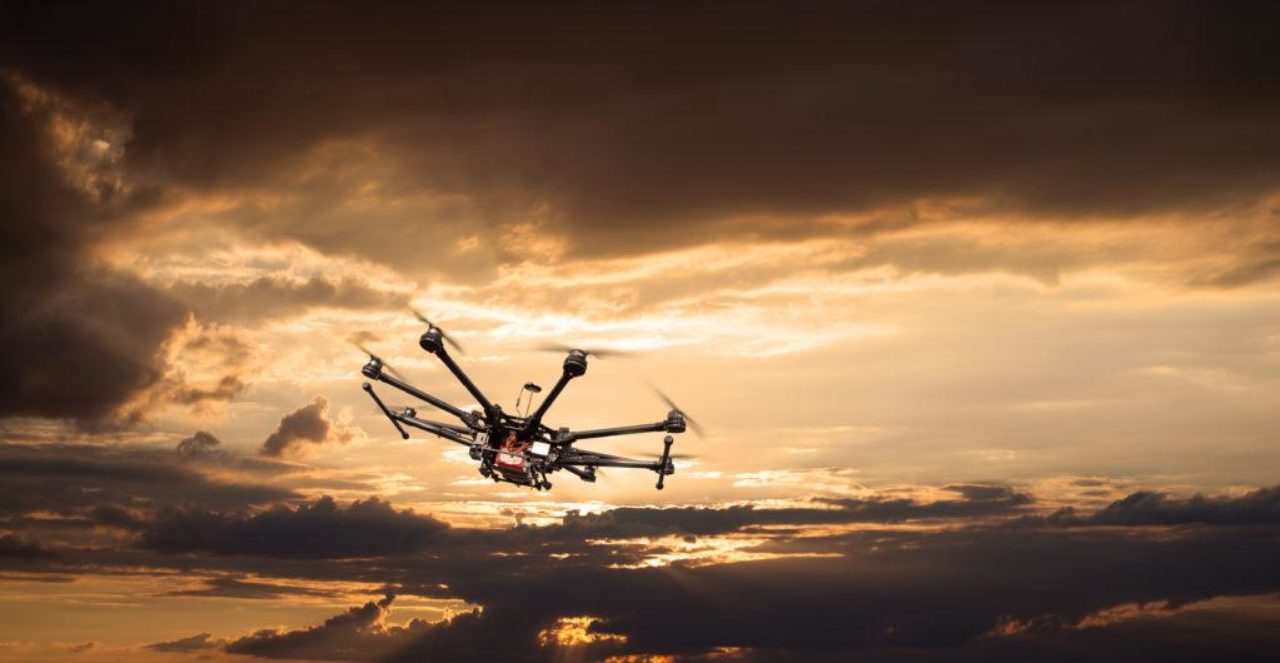
NASA should collaborate with the Federal Aviation Administration (FAA), industry, academia to research the full effects that increased unpiloted air vehicle traffic would have on society, including ramifications to sound, privacy, environmental matters, and cybersecurity, says a new report from the National Academies of Sciences, Engineering, and Medicine.
According to a National Academies News press release:
“The increasingly common use of electric and hybrid aircraft for urban, suburban, and rural operations — referred to as advanced aerial mobility — promises to change the way that people and cargo are moved. The committee that conducted the study found that, despite the everyday use of the term “urban air mobility,” these vehicles (often referred to as “drones”) are servicing rural and suburban areas, and can be highly beneficial to those settings even before they begin operating in more population-dense areas.
“Advancing Aerial Mobility — A National Blueprint finds that increased mechanical reliability and lower manufacturing and operating costs for unpiloted aerial vehicles can enable their use in environments currently using ground vehicles for activities such as security patrols, emergency response, and cargo transport. This new industry will also challenge today’s airspace monitoring systems and regulatory framework, affirming the need to research how the national airspace could evolve.
“The report recommends that NASA facilitate collaboration between relevant government agencies and stakeholders, including the FAA, U.S. Department of Defense, state and local governments, industry, and academia, to prioritize and execute research on the effects of advanced aerial mobility vehicles and associated infrastructure. Some research should be performed to quantify and mitigate noise impacts, including the associated psychoacoustic and health effects. Societal impacts on areas such as privacy, intrusion, public health, environmental aspects, and inequity should also be points of focus for this collaborative research.
“Advanced aerial mobility involves the emergence of transformative and disruptive new airborne technology,” said Nicholas Lappos, Senior Fellow for Advanced Technology at Sikorsky, a Lockheed Martin company, and chair of the committee. “We believe that the acceptance of these new vehicle operations will depend on important factors such as the public’s perception of their safety, noise, and intrusion.”
The press release continues:
“Cybersecurity is also an essential area for collaboration and research, according to the report. Current cybersecurity approaches that rely on threat analysis and information security will not be adequate for future advanced aerial mobility platforms that involve safety-critical operations performed by autonomous systems, such as emergency response. While establishing standards of safety and security are the purview of the FAA, NASA should research and develop the software and hardware certification techniques and guidelines that will inform those standards. Researching better contingency management procedures for autonomous operations, primarily involving real-time data processing, is also essential for safety, the report said.
“The committee also called for collaborative research between NASA and the FAA on how best to share air traffic management data so as to introduce advanced aerial mobility traffic into the national airspace system. This system would use one infrastructure with multiple levels of complexity to network piloted and unpiloted vehicle types, and use technology to manage, separate, and prioritize air traffic. This new vision of the national airspace necessitates a partnership between NASA and the FAA to manage responsibility and accountability across various stakeholders in the form of a joint regulatory framework.
“In order to fulfill latent needs in the autonomous cargo delivery industry, NASA, within the next year, should establish partnerships with cargo logistics providers and relevant manufacturers, the report says. This partnership would focus on developing technologies aimed at deploying autonomous cargo drone delivery within three years.
“The report discusses the necessary ground infrastructure for advanced aerial mobility, such as heliports and vertiports. Underutilized airports or abandoned pieces of real estate near ground transportation arteries could be converted for use by new aerial service providers. In order to best keep up with the increasing pace of technological development and use of drones, NASA should establish and coordinate a public-private partnership to facilitate advanced aerial mobility implementation to deliver near-term capabilities for mobility systems and infrastructure requirements.
For more information
https://www.nap.edu/catalog/25646/advanced-aerial-mobility-a-national-blueprint


